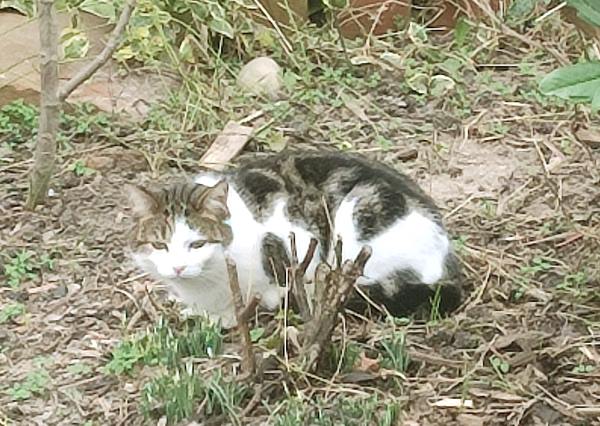I think Morbius might legitimately be the worst film i’ve ever seen on the big screen. The basic idea has potential, and for the first 15 minutes or so, i was cautiously optimistic — but then it all gets smothered by a mountain of pure gobshite and some of the worst dialogue ever put to screen.i
Page 16
I am not good at computer
Non-techies, you can safely ignore this post and go on with your day. But, tech people, if you’re still reading… a little help for an ignorant soul, please? 😅
I’m planning to add a comment section to the main part of my website. The problem is, of course, that i’ve barely ever touched PHP and Sql before, let alone tried to make something like a comment system, and as such, i have no fucking idea what i’m doing.

I’ve got a design figured out — see above — and a rough idea of what the database will look like:
- postId: Integer, generated by adding some random digits to the end of a Unix timestamp
- timestamp: Integer, just a Unix timestamp of when the comment was submitted
- commentLocation: Unicode string, max. 32 chars?, indicating on which comments section the comment was posted
- displayName: Unicode, max. 128 chars?, is what it says on the can
- emailAddress: Unicode, max. 128 chars?, used to generate the avatar via Gravatar and maybe filter spam if it comes to that
- website: Unicode, max. 128 chars?, used to… link to the commenter’s website
- commentText: Unicode, max. 4096 chars?, the actual text of the comment; will be processed as a subset of Markdown
- planet: Unicode, max. 16 chars?, any comment for which the response isn't earth will get thrown out
So, erm… any suggestions? Improvements? Ways of not getting my site hacked? Polite ways of telling me that this was a terrible idea? are welcome in the comments below.
“Hello, Spotify? I’d like to listen to Green Day’s ‘Normal Idiot’.” [maniacal laughter]

Dispatches from a coastal walk
I had some time to kill after buying my mam a present from Tynemouth’s station market and decided to spend it by taking a walk in the golden hours of the day, now that spring is coming around and the weather isn’t quite so permanently miserable. I thought i might show you some photos.
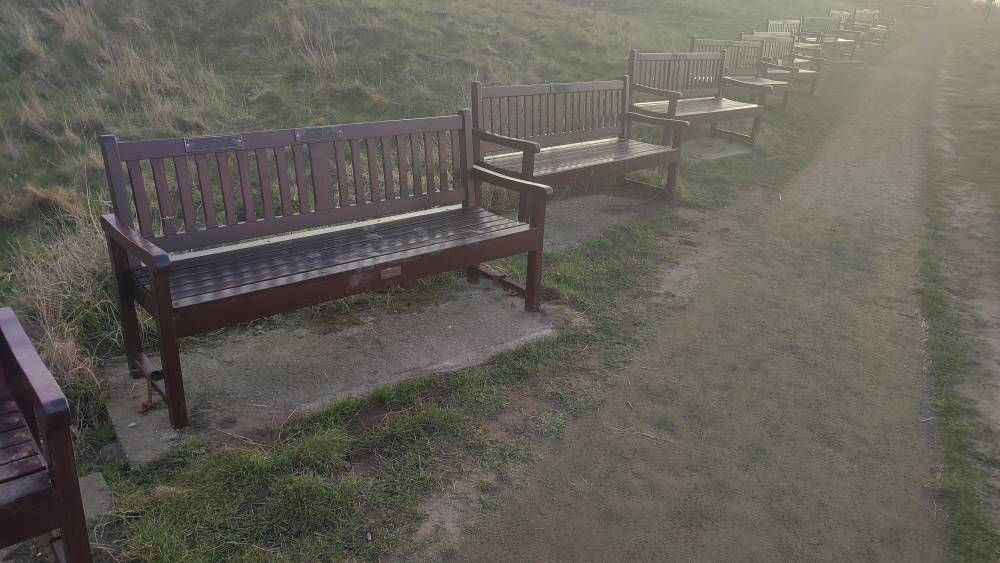
Chvrches at City Hall

I went to see everyone’s favourite synth-pop act Chvrches a few nights back, and i must say they put on a hell of a show. Even at the City Hall — quite a stuffy venue by most standards — the crowd went absolutely mental for “Clearest Blue” at the end! (I barely know what came over me.)
Great staging, too — i counted three costume changes throughout the night, including a delectably bloody “FINAL GIRL” shirt for the encore. (Their latest album has a horror-movie gimmick crafted entirely to let them swap remixes1 with John Carpenter — not that i’m complaining.)
The opening act were an Ozzie band called HighSchool who, being brutally honest, should go back to PrimarySchool. They’re one of those acts that basically only know how to write one song over and over, and it’s alright at first, but by take number five of the same sludge you’re praying for it to end, you know? (See also the inexplicably successful 1975 cover band Pale Waves.)
9/10, would stand in line for several hours again.
Mx van Hoorn’s link roundup, Volume VI
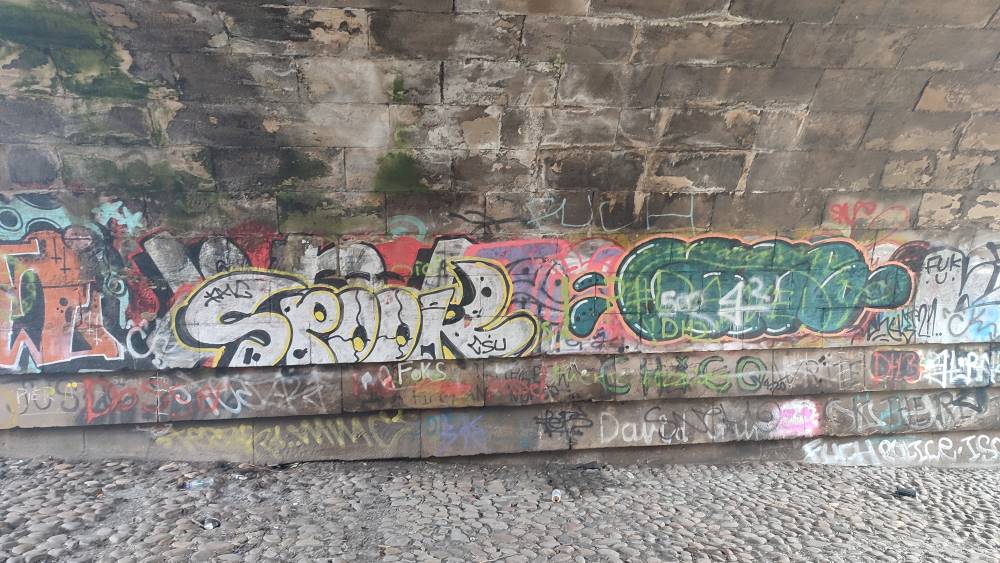
Well, i don’t know about you, but i’ve had a nice few weeks. Went to see the new Batman at the cinema, bought some records, went out on a couple of jaunts — you get the idea. Anyway. Links.
- Noah Verrier, oil painter
- Angus Barbieri’s fast
- Jim Carrey covers “Creep” — perhaps the only song that gets better when sung off-key
- The GoJauntly app generates green walking routes in your local area — right up my alley! I think it’s only in the UK for now, alas
- Hollywood greenlights a Billie Joel biopic… despite not having any rights to his music, name, or image — good luck with that
- Ukraine’s ateliers are pivoting to the business of Molotov cocktails
- An ominous emergency broadcast two days before a train crash in Hoboken: “Would you, could you, on a train?”
- An excellent website for an excellent dog
- GNU Terry Pratchett — “A man is not dead while his name is still spoken.”
- A manhwa1 version of Asimov’s The Last Question
Eulogy for a food court
I was on my usual city constitutional the other week when i noticed that my favourite bubble tea place1 had shuttered. Hm, that’s odd, i thought. Last time that happened was lockdown. Don’t know why they’d do it again. I assumed they’d be back again swiftly, and went on with my day.
Then the week after i noticed that the entrance to the über-hip shipping-container food court of which it was a part was blocked off. Hm, that’s odd, i thought. Ah, well. It’s probably just construction. These things happen all the time.
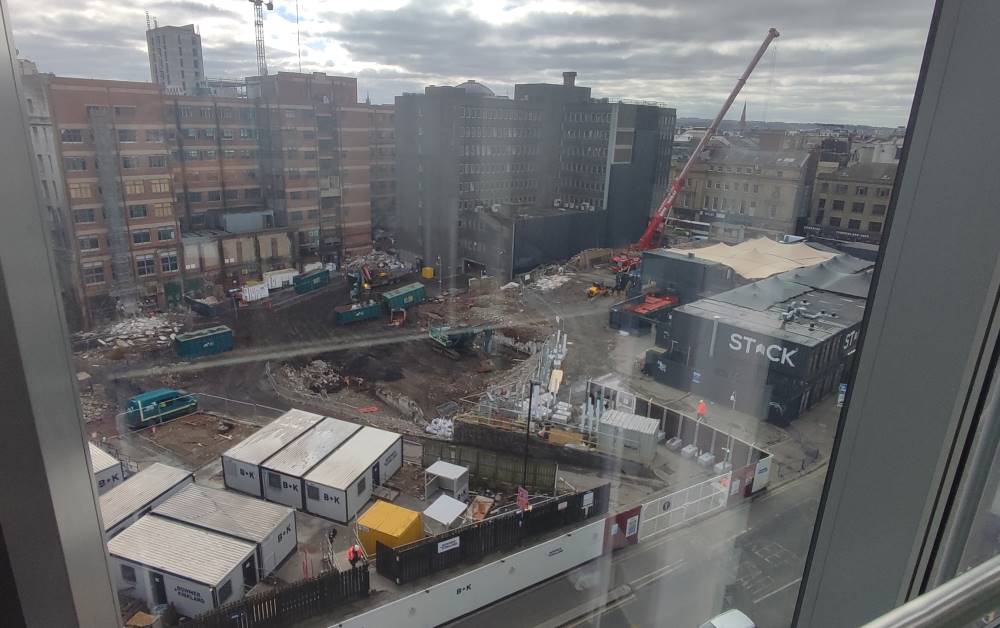
It was only yesterday that i saw the crane lifting one of the shipping containers away and realised something (other than the container) was up. Sure enough, one quick google reveals the flashy new development that’ll be taking its place — originally it was going to be mixed-use, but covid crunch caused them to scale back to the thing that covid really, conclusively proved was absolutely 100% necessary and in demand, definitely: offices.
“Pilgrim’s Quarter” is part of a broader redevelopment of the neglected Pilgrim Street, which may or may not include a pedestrianisation — i don’t know; it’s all in jargonese and i can’t make heads or tails of what Enhancing The Public Realm is meant to mean. (Or, for that matter, why they’ve misspelt it as “Pilgrim’s Quater” on the official brochure.)
The permission slips are all in place — so here’s to you, Stack. You might have had some exorbitant prices (sorry, Korean place, but i’m not paying £12 for a few chicken wings and fries), but otherwyze you were a shining beacon of small businesses in the city centre — you were too good for this world. *Pops open a bottle of champagne*
Mx van Hoorn’s link roundup, Volume V
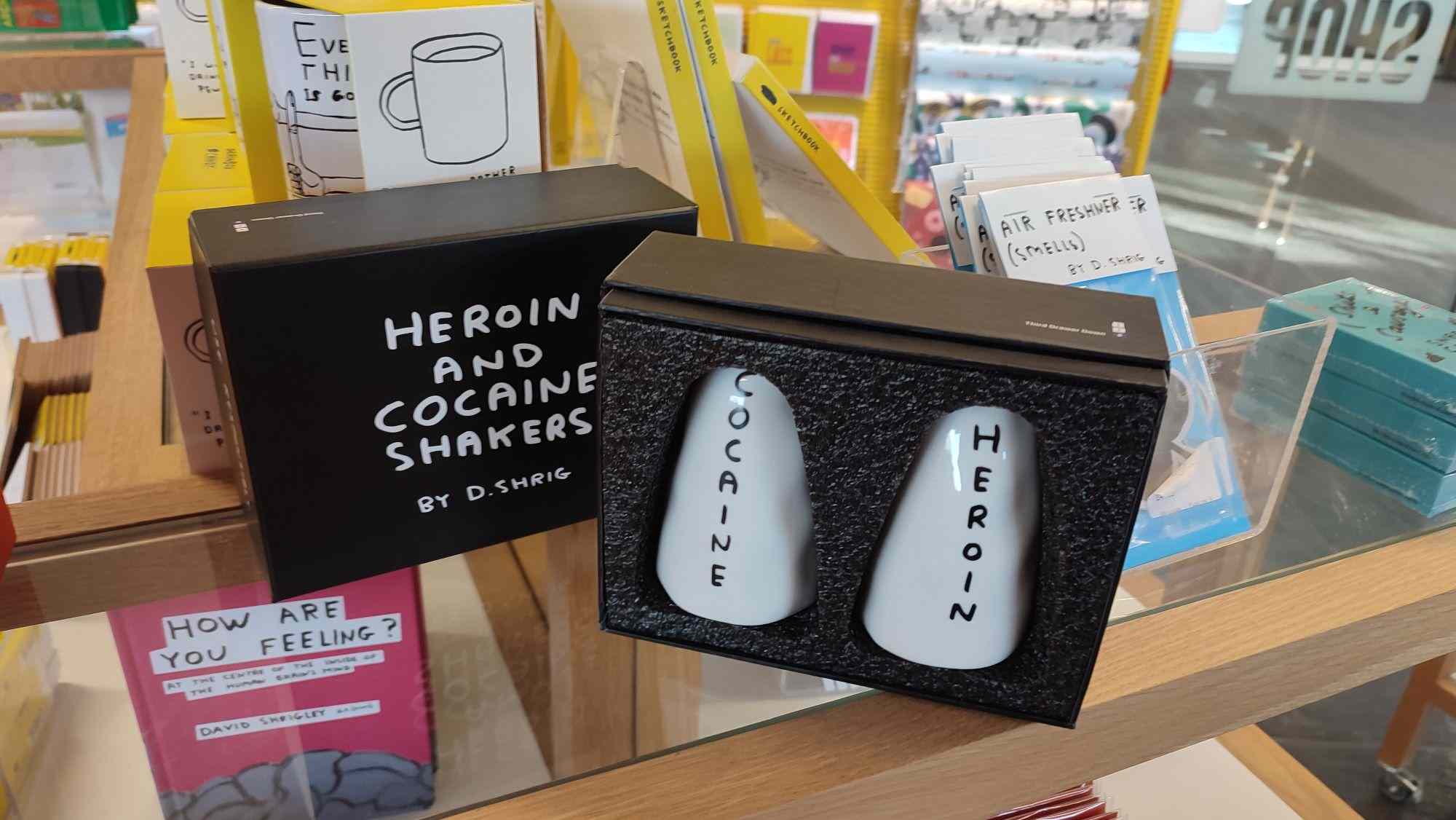
You know how this works. From X to Y, here’s some links i’ve scavenged from around the ’net.
- The site of Travis Ludlow, an 18-year-old Brit who recently became the youngest person to fly solo around the world
- “I ride bike not submarine”: Grab, a delivery app, apologises to a rider who was tasked to deliver food to a bridgeless island in the Straits of Johor
- From the ever-provocative Atlantic: Old music is killing new music
- Dann of Dannarchy.com on that time Sears sold a ray which shot concentrated arcs of electricity at your skin
- A cross-section of British life on a passing train. Something about this video is just so… lovely?
- Teen born without legs named Virginia state wrestling champion — I suppose as long as you’ve got arms…
-
The Youtube rabbit hole:
- Where the hell did the Jeff the Killer image come from, anyhow?
- Why Fred is the best Scooby-Doo character
- That time the Hell’s Angels tried to buy a Canadian nuclear bunker
- Peter Bergmann, the man who never existed
- Red Letter Media on the Bruce Willis fake movie factory
- A three-part series on the rise and fall of Hendrik Schön, the German “scientist” who almost faked his way to a Nobel prize (I, II, III)
The Big Here
Kevin Kelly, ex-editor of the Whole Earth Catalog and founder of Wired, brings us “The Big Here Quiz”, a 30(+4)-question test of how well you know your local area. I thought i’d give it a shot. Mr Kelly says he’s “extremely interested in hearing from anyone who scores a 26 or better on the quiz on their first unassisted-by-Google try”, which absolutely does not include me. You’ve got to learn these things somehow…
-
Point north.
- Easily done — that’s what a lifetime of staring at maps and stargazing will do!
-
What time is sunset today?
- My intial guess was twenty past five; Google helpfully confirms that i was off by only five minutes.
-
Trace the water you drink from rainfall to your tap.
- My local water company’s water is primarily sourced from the Kielder reservoir, in the Northumbrian outback — i’ll confess i’m not entirely sure what system of pipes brings it to my house…
-
When you flush, where do the solids go? What happens to the waste water?
- There are several sewage treatment works near my house; could be any one of them. (The local water company’s website is hopelessly vague about what happens to the wastewater — perhaps i should have paid more attention in school.)
-
How many feet (meters) above sea level are you?
- My intial guess was in the vicinity of 15 metres — hopelessly far off. The actual figure was more like fifty!
-
What spring wildflower is consistently among the first to bloom here?
- No idea. (The Woodlands Trust helpfully informs me that primroses appear as early as December when the winter is mild.)
-
How far do you have to travel before you reach a different watershed? Can you draw the
boundaries of yours?
- I couldn’t draw the boundaries, but the next town over is in a different watershed basically any way i travel.
-
Is the soil under your feet, more clay, sand, rock or silt?
- Clayey — oh, so clayey.
-
Before your tribe lived here, what did the previous inhabitants eat and how did they sustain
themselves?
- The question strikes me as a little Amerocentric — should i just ask my Welsh friend what he had for breakfast? (And, in any case, since i’m half immigrant, who exactly are the previous inhabitants? The Normans? The Anglo-Saxons? Romans? Celts?)
-
Name five native edible plants in your neighborhood and the season(s) they are available.
- Garlic, from summer to early autumn.
- Blackcurrants, in summer. (Banned in America!)
- Blackberries, from August to September.
- This is about where my limited knowledge runs out.
-
From what direction do storms generally come?
- The southwest.
-
Where does your garbage go?
- Landfill, mostly. (A quick Google reveals many landfill sites nearby, mostly owned by Suez.)
-
How many people live in your watershed?
- I have a right to privacy, Kevin.
-
Who uses the paper/plastic you recycle from your neighborhood?
- I should hope myself. I’d be a bit peeved if it all just gets shipped off to the Gambia or somewhere like that.
-
Point to where the sun sets on the equinox. How about sunrise on the summer solstice?
- You’re not going to believe this, but i can, in fact, point to the west. (Some tinkering about with Stellarium informs me that the sun rises almost due northeast on the solstice.)
-
Where is the nearest earthquake fault? When did it last move?
- Iceland, i would imagine. It’s constantly moving, but the last tectonic activity that reached the British ear was the eruption of Eyjafjallajökull.
-
Right here, where you are, how deep do you have to drill before you reach water?
- No idea.
-
Which (if any) geological features in your watershed are, or were, especially respected by your
community, or considered sacred, now or in the past?
- Taking “watershed” more broadly, the river Tyne was and is quite highly regarded. The Duddo Five Stones have expansive views of the Cheviots. The Tyne Valley is home to Hadrian’s wall — dotted with temples and such for Roman soldiers — and the oft-photographed Sycamore Gap tree.
-
How many days is the growing season here (from frost to frost)?
- No idea — after some research, it’s about 280 days… which is a full month longer than it was thirty years ago. Probably not a great sign.
-
Name five birds that live here. Which are migratory and which stay put?
- Kittiwakes (migratory; the bastards have colonised the Tyne Bridge and made the whole quayside smell of bird cack), robins (stay put), common ravens (stay put), barn owls (stay put), tawny owls (stay put).
-
What was the total rainfall here last year?
- I’m no statistician, mate… (It was about 690 millimetres.)
-
Where does the pollution in your air come from?
- Petrol emissions and the occasional blast of dust from the Sahara, though one presumes coal once made up a greater part.
-
If you live near the ocean, when is high tide today?
- No idea, at first — my 2022 Almanac tells me it was at about 4 p.m.
-
What primary geological processes or events shaped the land here?
- I know about the geological history of the Channel and the Scottish Highlands, but my earthlore regarding the north east is dreadfully lacking. Something something Pennines?
-
Name three wild species that were not found here 500 years ago. Name one exotic species that has
appeared in the last 5 years.
- Grey squirrels, murder hornts, and Japanese knotweed. In today’s globalised world, exotic species aren’t very — but perhaps the pet otter trade has driven up the numbers for Aonyx cinereus.
- What minerals are found in the ground here that are (or were) economically valuable?
-
Where does your electric power come from and how is it generated?
- Bit of gas here, bit of nuclear there, and some wind over there. Coal is slowly being phased out, thank the heavens.
-
After the rain runs off your roof, where does it go?
- Right into the gutter, mate.
-
Where is the nearest wilderness? When was the last time a fire burned through it?
- “Wilderness” can be a messy term to define, but a decent candidate is Northumberland National Park. No idea about the history of fires.
-
How many days till the moon is full?
- Ten. There are some benefits to using a lunisolar calendar!
-
What species once found here are known to have gone extinct?
- Wooly mammoths, Irish elk…
-
What other cities or landscape features on the planet share your latitude?
- In Europe, we have Copenhagen and Moscow. In America… erm, Churchill, Manitoba?
-
What was the dominant land cover plant here 10,000 years ago?
- No idea.
-
Name two places on different continents that have similar sunshine/rainfall/wind and temperature
patterns to here.
- Wellington and Vancouver, maybe?
While i might not have got the questions 100% correct, i still found it a fascinating learning experience. How many did you get right?
Een tierlijst van geuren, aroma’s, en stanken
| S | Lavendel, kaneel, vers gemaaid gras |
| A | Vanille, oude boeken, nieuwe boeken, buitenlucht |
| B | Knoflook, nieuwe auto’s, citrusvruchten, knisperend brandhout, mest* |
| C | Lijm, bleek, verf, koffie, je eigen lichaamsgeur |
| D | Mest*, natte honden, lichaamsgeur van anderen, cannabis, uitlaatgassen |
| F | Sigarettenrook, rotte eieren, kattenpis, menselijke uitwerpselen |
* Mest zit in een superpositie waarin het alle tiers tegelijk zou kunnen bezetten — aan de ene kant stinkt het naar stront (omdat het dat ook is), maar na zo lang op het platteland te hebben gewoond, kan ik niet anders dan het verfrissend vinden voor de zintuigen. Het is de geur van het ontsnappen aan de stad - de geur van Demeter!
Smells tier list
| S | Lavender, cinnamon, freshly-mown grass |
| A | Vanilla, old books, new books, “the outdoors” |
| B | Garlic, new cars, citrus, crackling firewood, manure* |
| C | Glue, bleach, paint, coffee, one’s own body odour |
| D | Manure*, wet dogs, other people’s body odour, cannabis, exhaust fumes |
| F | Cigarette smoke1, rotten eggs, cat piss, human waste |
* Manure is in a curious superposition where it could probably occupy every tier at once. On one hand, it smells like shit (because it is), but after so long living in the country, i can’t help but find it refreshing to the senses. It’s the smell of having escaped the city — the smell of Demeter!
The increasingly irregular monthly recap, “Fuck you, it’s February!” edition

Hello. I’ve done some things in the past month and a half. They were alright.
Films watched
- Miranda July’s Kajillionaire: watched on a whim as part of my local art-house cinema’s “best of 2020” programme. A soppy gay kiss and a solitary touching scene can’t save this film from its own worst tendencies, with irritatingly quirky characters, jokes so dry they don’t deserve to be called “humour”, and a flat, unemotional lead. (D)
- Quentin Tarantino’s Kill Bill, Vol. 1 (2003): Man sure does like his feet. (A)
- Marvel’s Spider-Man: No Way Home (2021): I can’t be a cynic about this — it’s just plain fun from start to finish. Willem Dafoe and Andrew Garfield absolutely steal the show, almost making up for the former’s goofy mask and the latter’s abysmal Spider-flicks. Some of that CGI was a bit dodgy, though, wasn’t it? (B+)
- The Wachowskis’ The Matrix Reloaded (2003): I’m going to say it: i enjoyed it more than the first one! Is it a better film? I don’t know about that. But it takes itself so seriously while being so unabashedly goofy that i can’t help but fall in love with it. Where else can you find PS2 Keanu fighting hundreds of Hugo Weavings in the same film as a monologue about the meaning of free will? (A-)
- The Wachowskis’ The Matrix Revolutions (2003): This one, on the other hand, did the worst thing a film can do. It bored me — which you’d think wouldn’t be possible given its massive scale. (D+)
- Lana Wachowski’s The Matrix Resurrections (2021): Finally, the film i binge-watched the other three to see. I appreciate what it was trying to do, and some of the worldbuilding was fascinating, but as much as i want to like it, it just falls flat on its face everywhere else. Hugo Weaving’s tech-bro replacement is a poor fit for the job. The action is just plain awful, and the dialogue isn’t much better (Lana, please log off). The best part about it was the cut-ins from the original film. Sorry, Ms Wachowski, but i think i’ll be taking the blue pill. (C-)
-
Jason Reitman’s Ghostbusters: Afterlife (2021): It’s a cynical
cash-grab any way you slice it, sure. It’s less of a sequel to the original film and more a
sequel to a parallel, schmaltzier Spielbergian version of it which never existed. There’s a
character called “Podcast.” But… i enjoyed it! It recaptures the spark of those classic eighties
kids’ films — The Goonies, E.T., &c. — in a way that’s been
sorely missing for the last decade. (B)
Spoilers
Not sure how i feel about the ethics of CGI Harold Ramis, mind…
Things which are not films
- 📺 Adult Swim’s Smiling Friends (2021): I have no idea what this absolutely deranged cartoon is, but i would like three more seasons and a movie greenlit immediately, thank you very much. (A)
- 📺 The BBC’s Around the World in 80 Days (2021): Just not my thing, i’m afraid. (E)
- 🎮 Josh Wardle’s Wordle (2021): A nice way to unpick my brain at the start of the day. (C+)
- 📚 Mary Roach’s Stiff: The Curious Lives of Human Cadavers (2003): I was very much enjoying my copy, which i had received as a Christmas gift, until i misplaced it… somewhere? It is, one presumes, now in the same dimension where all the socks and pens go.
- 💿 Talking Heads’ Speaking in Tongues (1983): Picked this classic up at Beatdown. “This Must Be the Place (Naïve Melody)” may just be the greatest song ever written. (A)
- 🏞️ Gæa’s Ouseburn (4.5 billion BCE), with assistance from Lord Armstrong and T. Dan Smith: The finest place for a walk in Newcastle, if i do say so myself. I’ve been working on a post for ages about all the nuances of it, but, alas, the heavy writer’s block sits unmoving on my keyboard. (A+)
Other recent minutiæ
- Your author’s pinky finger was recently intimately acquainted with the inside of an antiseptic wipe dispenser, and she had to go to A&E to get it fixed.i Not my proudest moment.
- Home-made flatbread. Need i say more?
- Gods bless whoever’s been sticking up all those anti-anti-vax stickers. They’re fighting the good fight! “It’s not Covid-1984.”
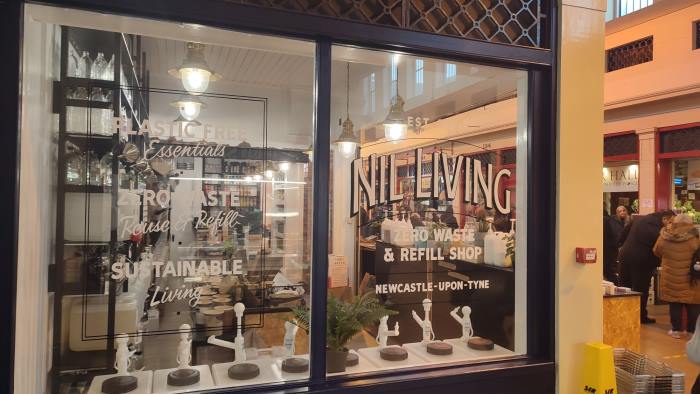

Leaked: 10 Downing Street’s playlist
One of the more surprising results of the recent investigation into Big Boris’s lockdown conduct was the unearthing of a playlist used to motivate employees during their completely ordinary work events. Highlights include:
- Miley Cyrus - Regular Work Event in the U.S.A.,
- Vengaboys - We Like to Engage in Normal Work Proceedings,
- Cyndi Lauper - Girls Just Want to Become Civil Servants,
- Arctic Monkeys - I Bet You Look Productive in the Office,
- Avicii - Waiting For The Results Of The Independent Investigation And Report Conducted By Sue Gray,
- Walk the Moon - Dance then Shut Up, and, of course,
- Shaggy - It Wasn’t Me
This list of songs, no doubt, absolves the government of any kind of wrongdoing.
Cat sighted
Just a month or so after Arwen, another storm has decided to come over here and mess things up — this time Storm Malik (no relation to Rami or Terrence). Ripped-up power poles, blustering winds, uprooted trees… but this mog seems fine with it.
